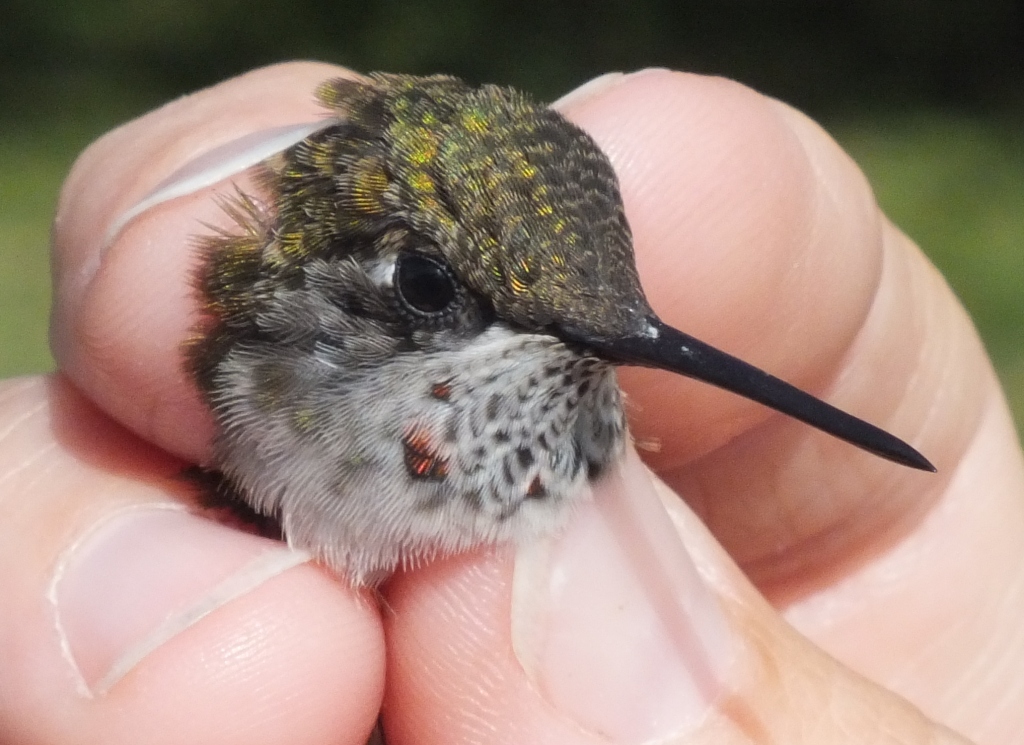
In the humdrum of our everyday lives sometimes something special happens. A cool song on the radio, the scent of flowers along the trail, a rainbow, a touch of spice that turns a ho-hum meal into a delight. Today it was warblers brightening the day.

There was a northerly wind during the night and it enticed (prompted? urged?) migrants to get on the move. And when the sun showed signs of rising these birds, high above us, headed for food, rest and safety from avian predators in the landscapes below them. Some stopped at Ruthven. We banded 59 birds of 30 species including 7 firsts for the season, all long-distance migrants: Yellow-bellied Flycatcher, Swainson’s Thrush, Tennessee Warbler, Magnolia Warbler, Black-throated Green Warbler, Blackburnian Warbler, and Canada Warbler.
Although the warblers have assumed their duller “basic” plumages, they still delight with the subtlety of their colours:


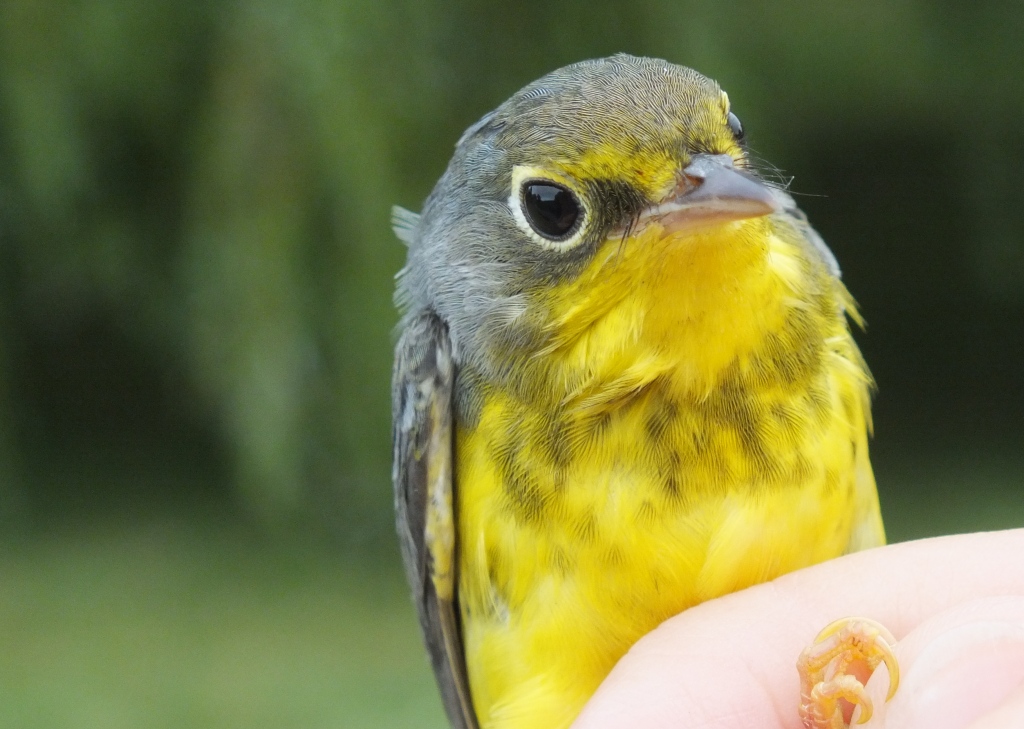
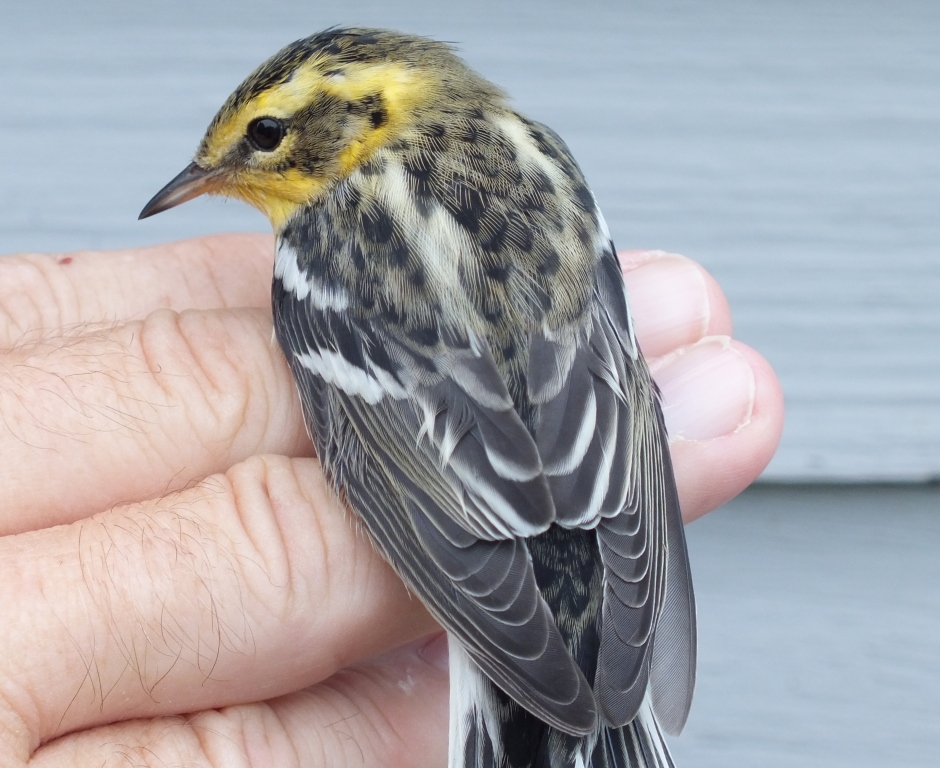
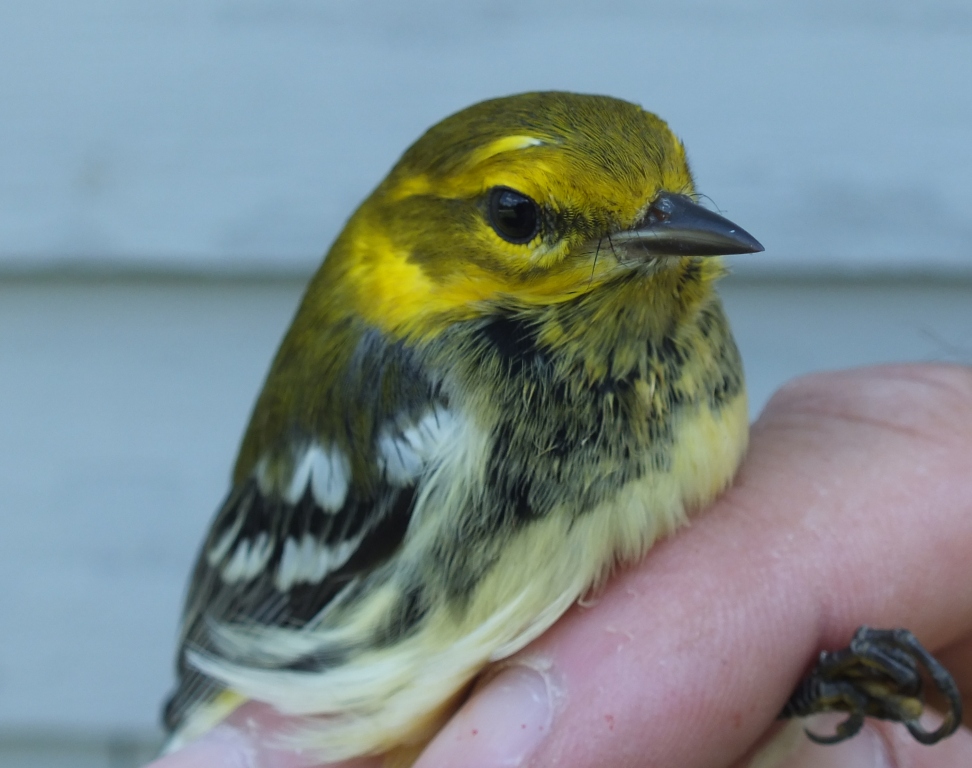
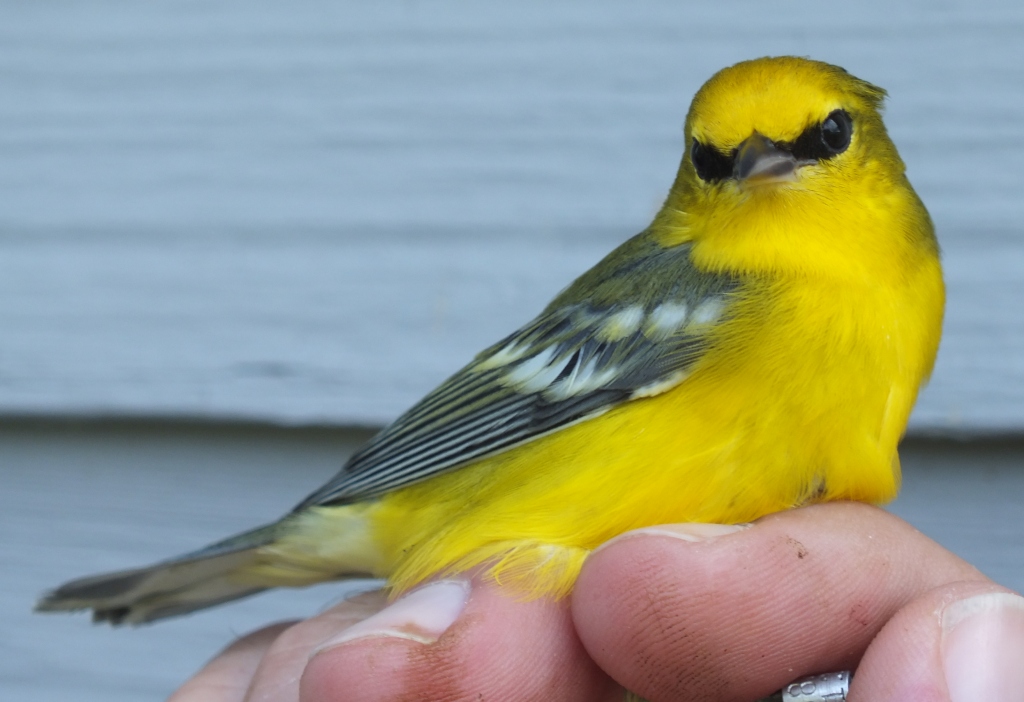
We caught a group of 4 juvenile Eastern Bluebirds. One of the birds had a deformed beak, making it look like a cross-bill. The deformity was obviously difficult for the bird as it had a lower muscle score and weighed at least 3 grams less than its siblings.
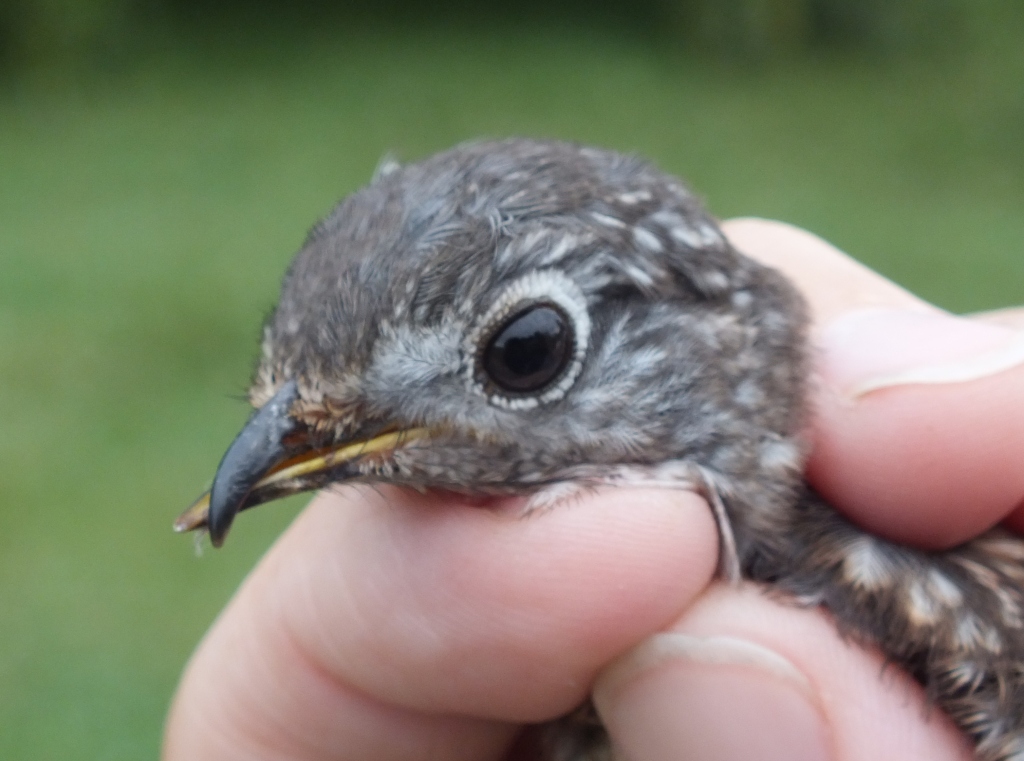
Banded 59:
1 Mourning Dove
1 Eastern Wood Pewee
1 Yellow-bellied Flycatcher
1 Least Flycatcher
1 Blue Jay
2 Black-capped Chickadees
1 White-breasted Nuthatch
2 House Wrens
3 Blue-gray Gnatcatchers
4 Eastern Bluebirds
1 Veery
1 Swainson’s Thrush
3 American Robins
4 Gray Catbirds
5 Warbling Vireos
5 Red-eyed Vireos
1 Blue-winged Warbler
1 Tennessee Warbler
2 Magnolia Warblers
1 Black-throated Green Warbler
2 Blackburnian Warblers
2 Common Yellowthroats
1 Canada Warbler
3 Northern Cardinals
2 Rose-breasted Grosbeaks
1 Chipping Sparrow
2 Song Sparrows
1 Common Grackle
3 House Finches
1 American Goldfinch
ET’s: 49 spp.
Rick
